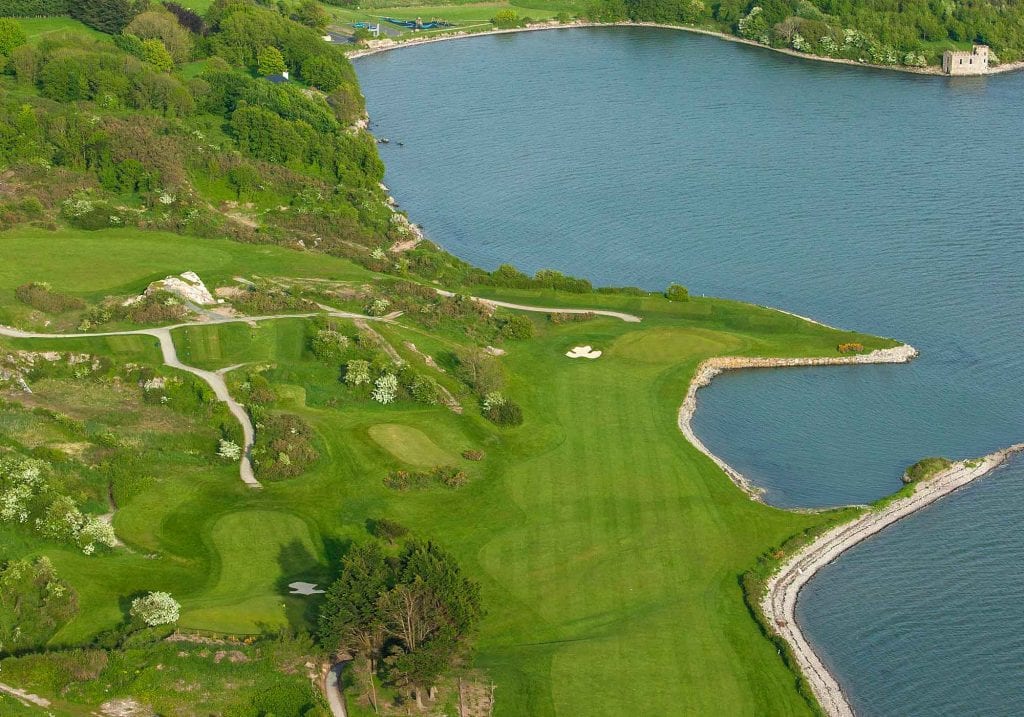
Founded in 1888, and redesigned in 1927, by Alister McKenzie of Augusta Fame. This Championship course as graceful and mature as its age would suggest. Scenically situated in Cork Harbour, the club has played host to major amateur and professional tournaments over the years including the Carrolls Irish Open.With a par of 72 and measuring 6119 metres, Cork Golf Club is as good a golfing challenge as you’ll find anywhere in Ireland.
Cork GC was formed in 1888 by prominent Cork businessmen. The first location was at Rathcooney Hill above Glanmire village. Thereafter a number of moves were made while searching for a better site. The present location at Little Island was chosen in 1897 when Messrs Maudslay, J. H. Gubbins and Sharman Crawford spotted its potential while sailing in the adjacent estuary.
Initially the members laid out just four holes along the shore amongst what were still working limestone quarries, owned by the local Cantillon family. To allow play, many craters had to be filled with waste stones and top soil, producing a fast draining, links-like turf; still an attractive feature to this day. A club house was built shortly afterwards near the present eight tee.
In 1898 the ambitious club appointed a professional, David Brown, from Edinburgh who was destined to remain with the club until his retirement in 1926. It was he, who in 1901 with some external assistance, created an extension to nine holes.
The club house together with most of the club’s early records was destroyed in a fire in 1945. An impressive replacement was designed, built and opened before the end of 1946 a remarkable achievement at this time of post-war austerity. This in turn was refurbished in 1968 and completely redesigned in 2001 which is the fine clubhouse of today.
The club did not rest on its laurels as a MacKenzie course, but continually upgraded and modernized, using prominent golf architects such as Frank Pennick, well known for his work in Portugal and Dave Thomas associated with the Belfry in England. Even the renowned American architect Robert Trent Jones Snr. commented on a proposal for a new green.
Thus, over the years, new greens, bunkers and tees were established and the course was considerably lengthened. However the planting of a variety of evergreen and deciduous trees drastically altered the course appearance, leading to the attractive original features of rock, gorse and water becoming less obvious.
Dress Code
We request all golfers to kindly adhere to our dress code, which is:
1. General
The following are not permitted on the course or in the clubhouse
(i) Denim jeans or jackets.
(ii) Track-suits (tops or bottoms).
(iii) Sleeveless or collarless shirts.
(iv) Runners or canvas trainers.
2. Course
(i) Shorts – Must be tailored and cut at or just above the knee.
(ii) Please note – Three quarter length, cargo, combat, shorts with large side pockets, athletic with draw string or elastic waistband are not permitted.
(iii) White or matching sports socks are required.
(iv) Long trousers may not be tucked into socks.
3. Clubhouse
(i) Smart casual wear is accepted throughout the clubhouse.
(ii) Shorts are permitted in the bar but not in the dining room.
(iii) Golf shoes are not permitted upstairs in the clubhouse.
